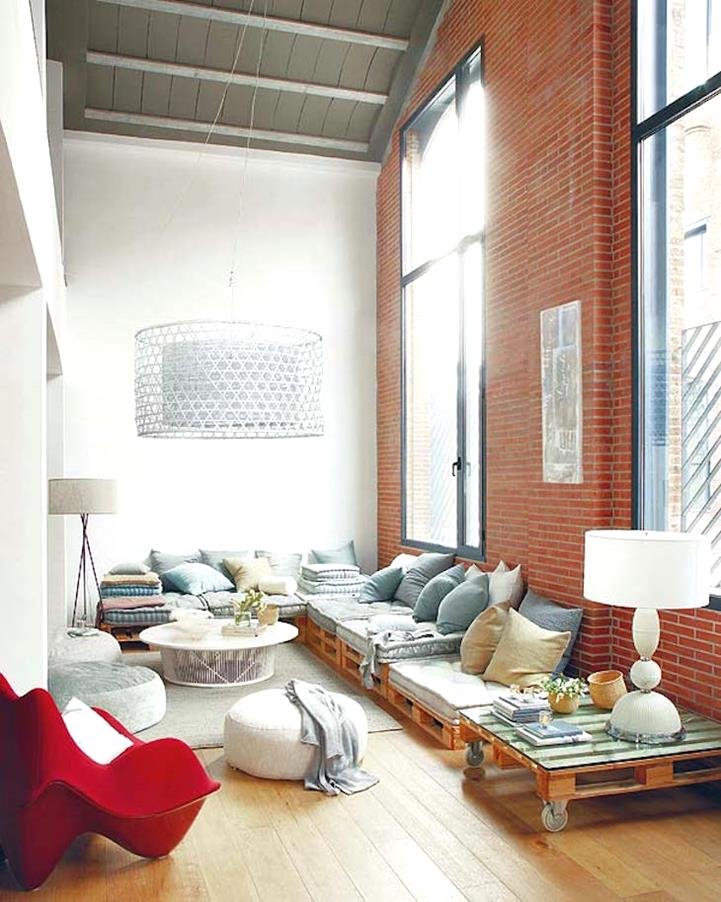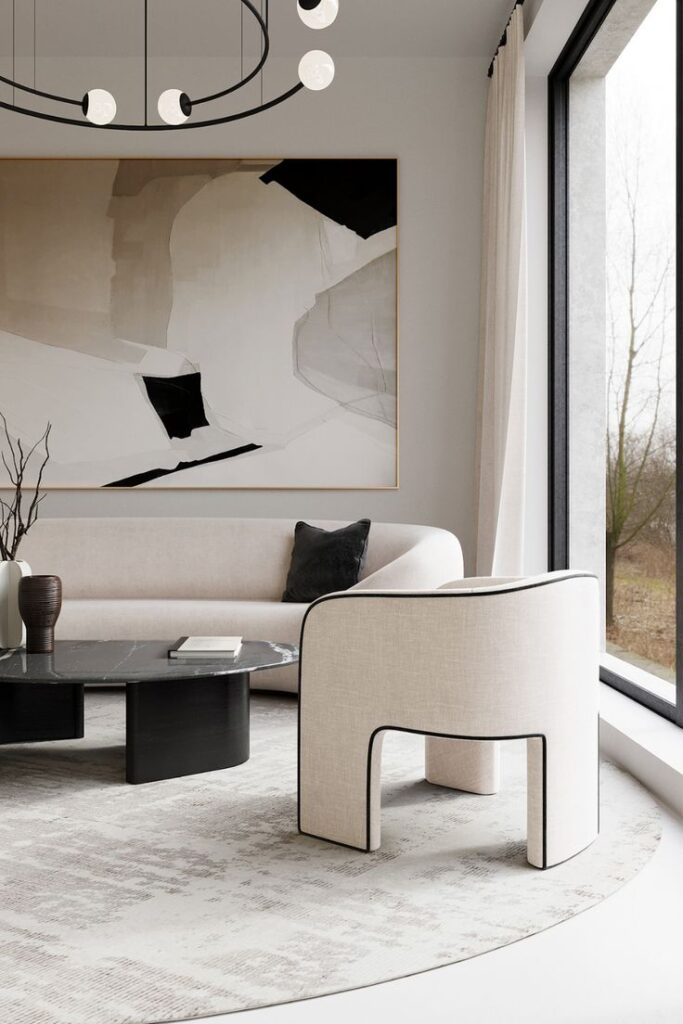
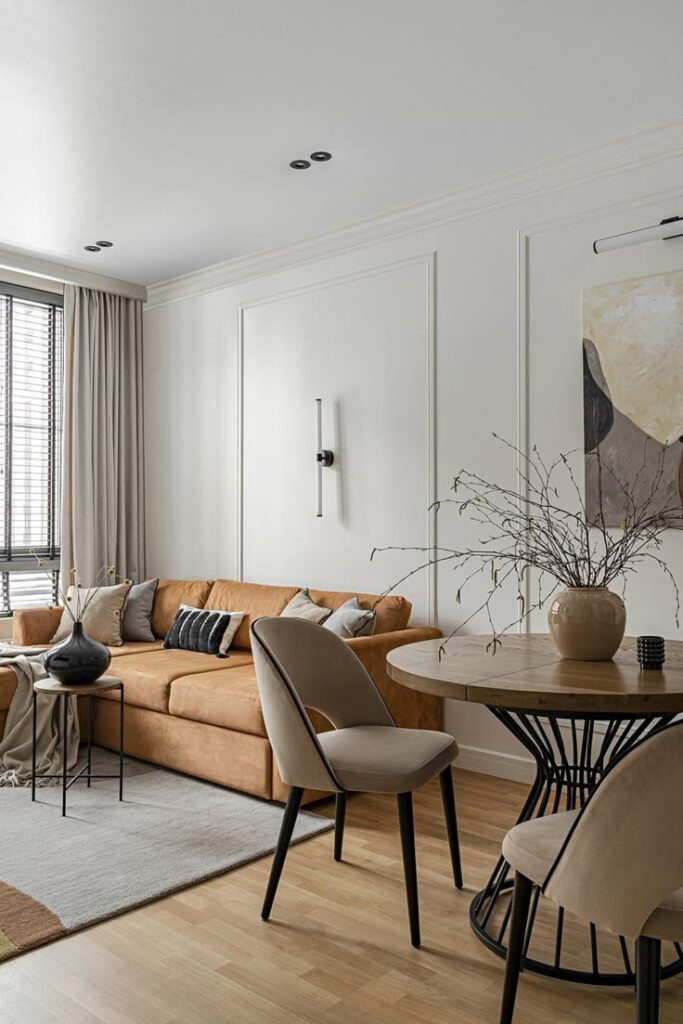
Most advice about minimalist design misses the mark. While some think it means empty spaces or bare walls, true minimalism is a powerful strategy that shapes how we live and communicate. Nearly every major design trend in the last decade has drawn from minimalist principles for clarity and impact. Understanding minimalism today helps designers create experiences that feel calm, intentional, and deeply meaningful.
Table of Contents
- Defining Minimalism In Design Today
- Core Principles Of Minimalist Aesthetics
- Types Of Minimalism Across Design Fields
- Practical Applications In Interiors And UI
- Common Pitfalls And How To Avoid Them
Key Takeaways

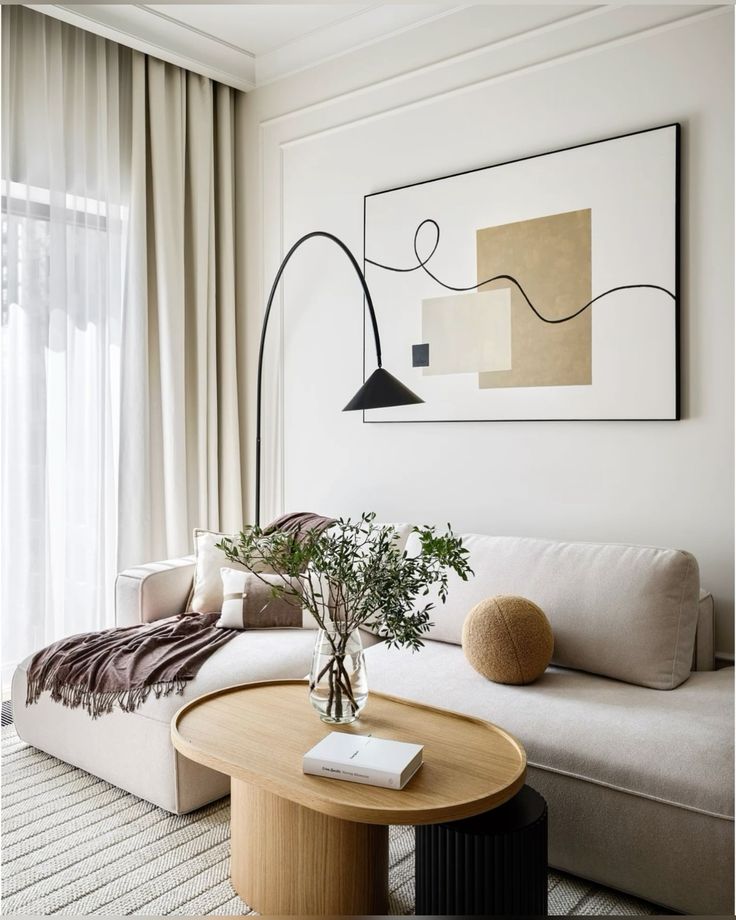
| Point | Details |
| Emphasis on Simplicity | Minimalism focuses on removing unnecessary elements to highlight functionality and essential beauty in design. |
| Core Principles | Key principles include simplicity of form, color restraint, functional clarity, and strategic use of negative space. |
| Diverse Applications | Minimalism can be applied across various design fields including product, graphic, architecture, digital, and fashion design. |
| Pitfalls to Avoid | Common mistakes include over-simplification, lack of personality, and rigidity; balance is key to achieving true minimalist design. |
Defining Minimalism in Design Today
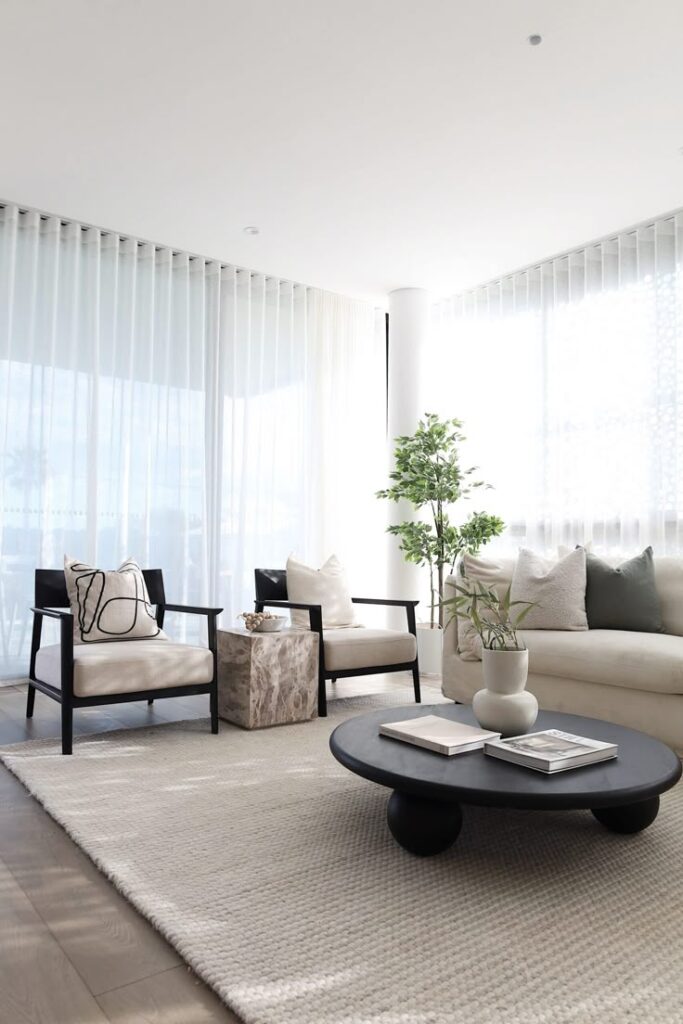
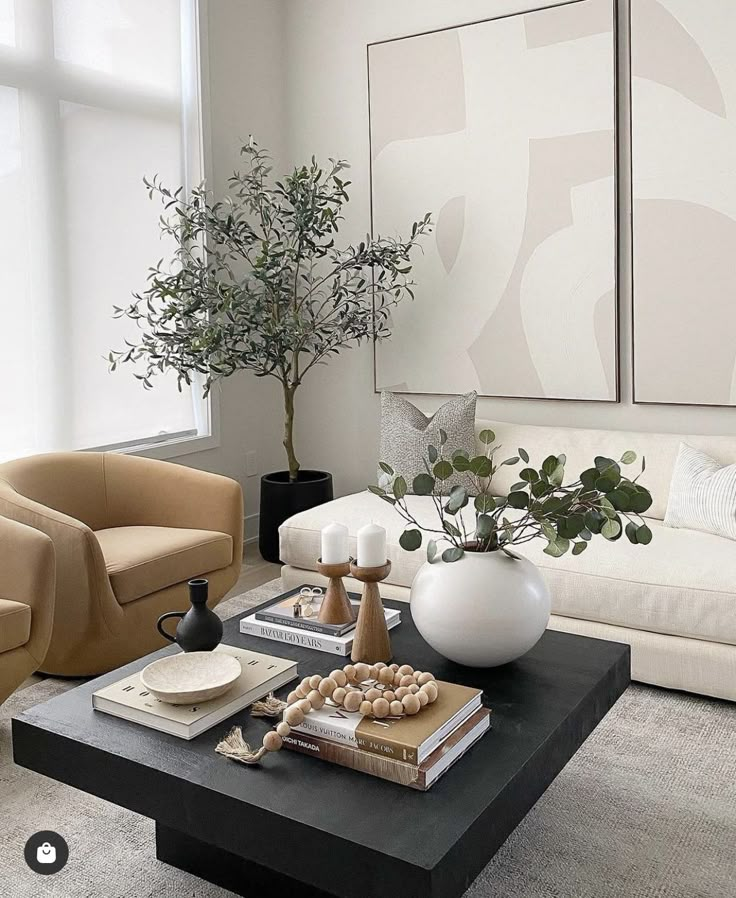
Minimalism is more than just an aesthetic choice—it’s a strategic approach to design that strips away complexity to reveal pure, functional beauty. According to granthaalayahpublication, minimal design is fundamentally about communicating concepts by removing unnecessary components and emphasizing the most significant elements.
At its core, minimalist design follows several key principles that transform visual communication. As drpress highlights, these principles include:
- Simplicity of Form: Using clean, geometric shapes
- Color Restraint: Employing limited color palettes
- Function-First Approach: Prioritizing purpose over decoration
- Negative Space: Leveraging empty areas to create visual breathing room
Modern minimalism isn’t about creating sterile or empty spaces, but about intentional design that speaks volumes through simplicity. It’s a philosophy that asks designers to question every element: Does this truly serve a purpose? Can this be simplified? Minimalist Architecture: Timeless Simplicity’s Power explores how this approach transcends visual design and becomes a broader lifestyle and architectural statement. By ruthlessly editing out the unnecessary, designers create experiences that are not just visually elegant, but deeply meaningful.
Core Principles of Minimalist Aesthetics
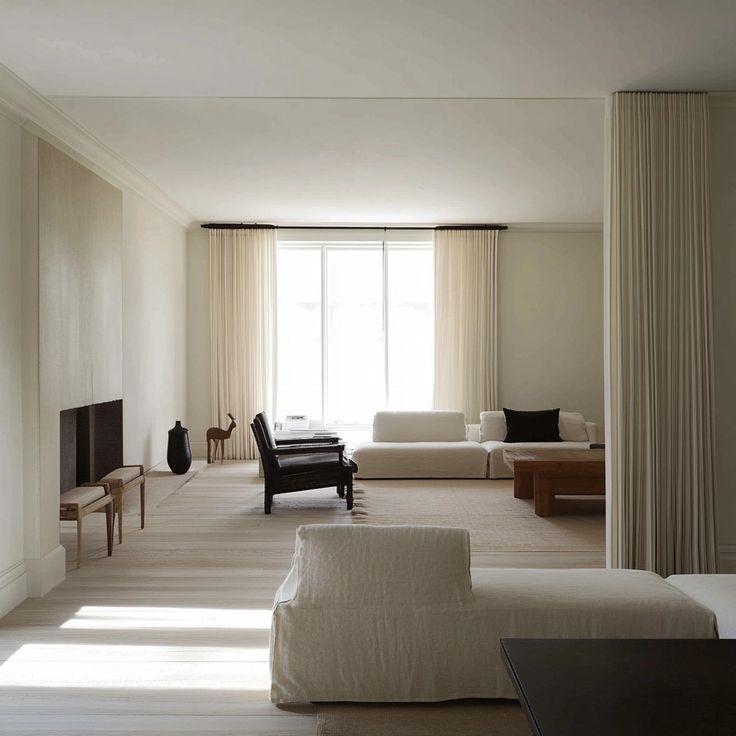
Minimalist aesthetics is a design philosophy that transforms complexity into elegant simplicity, focusing on the essential elements that create powerful visual experiences. drpress reveals that minimalist design fundamentally centers on geometric form language, achieving beauty through precise composition and thoughtful reduction.
The core principles of minimalist aesthetics can be distilled into several key components:
- Geometric Precision: Utilizing clean, structured shapes
- Color Purity: Selecting limited, intentional color palettes
- Negative Space: Creating visual breathing room through intentional emptiness
- Functional Clarity: Ensuring every design element serves a specific purpose
Interestingly, paradigmpress explores how minimalist aesthetics draw inspiration from philosophical traditions like Wabi-Sabi, which emphasize the beauty of simplicity and natural imperfection. 8 Ways to Pair Geometric Wallpaper with Minimalist Decor demonstrates how these principles can be practically applied in interior design, showcasing that minimalism is not about sterility, but about creating spaces and experiences that feel intentional, calm, and profoundly meaningful. By stripping away the unnecessary, designers create visual narratives that speak volumes through restraint and thoughtful composition.
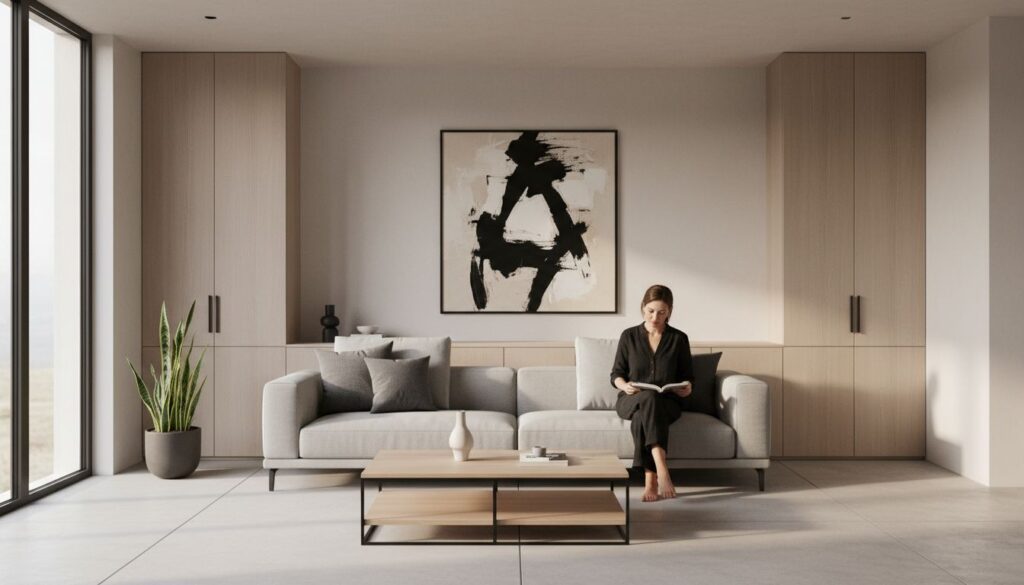
Types of Minimalism Across Design Fields
Minimalism transcends individual design disciplines, manifesting uniquely across various creative domains. drpress reveals that minimalism’s application is not uniform but adapts dynamically to different design contexts, fundamentally transforming how designers approach functionality and aesthetics.
Across design fields, minimalism emerges in distinct variations:
- Product Design: Focusing on essential functionality and clean forms
- Graphic Design: Emphasizing negative space and simplified visual communication
- Architecture: Creating spaces that breathe with intentional emptiness
- Digital Design: Streamlining user interfaces for intuitive interactions
- Fashion Design: Crafting elegant, versatile pieces with clean silhouettes
bcpublication highlights how brands like Muji exemplify minimalist design philosophy, demonstrating that simplicity can be a powerful strategic approach. Japandi Style: Combine of Japanese and Scandinavian Design perfectly illustrates how minimalist principles can merge cultural design traditions, creating aesthetics that are both functional and profoundly meaningful. What unites these diverse expressions is a core commitment: strip away the unnecessary to reveal the essential, creating design that is not just visually clean, but emotionally resonant.

Practical Applications in Interiors and UI
Minimalist design transcends aesthetic preference, becoming a strategic approach to creating functional, purposeful spaces and digital experiences. doaj reveals that minimalism in interior architecture is not just about removing elements, but carefully curating spaces that enhance human interaction and emotional well-being.
In interior design, minimalist principles manifest through:
- Spatial Clarity: Creating open, uncluttered environments
- Functional Furniture: Selecting pieces with clean lines and multipurpose capabilities
- Neutral Color Palettes: Using restrained color schemes that promote calm
- Strategic Storage: Implementing hidden or integrated storage solutions
- Natural Light Optimization: Maximizing light flow and transparency
ijarr highlights how minimalism has become increasingly relevant post-pandemic, with people seeking spaces that promote mental clarity and efficiency. UI/UX Design Trends: What to Expect in 2024 demonstrates how these principles extend into digital interfaces, where minimalism translates to intuitive, clutter-free user experiences. The ultimate goal remains consistent across domains: simplify to amplify, removing visual noise to create designs that are not just aesthetically pleasing, but profoundly functional and emotionally resonant.
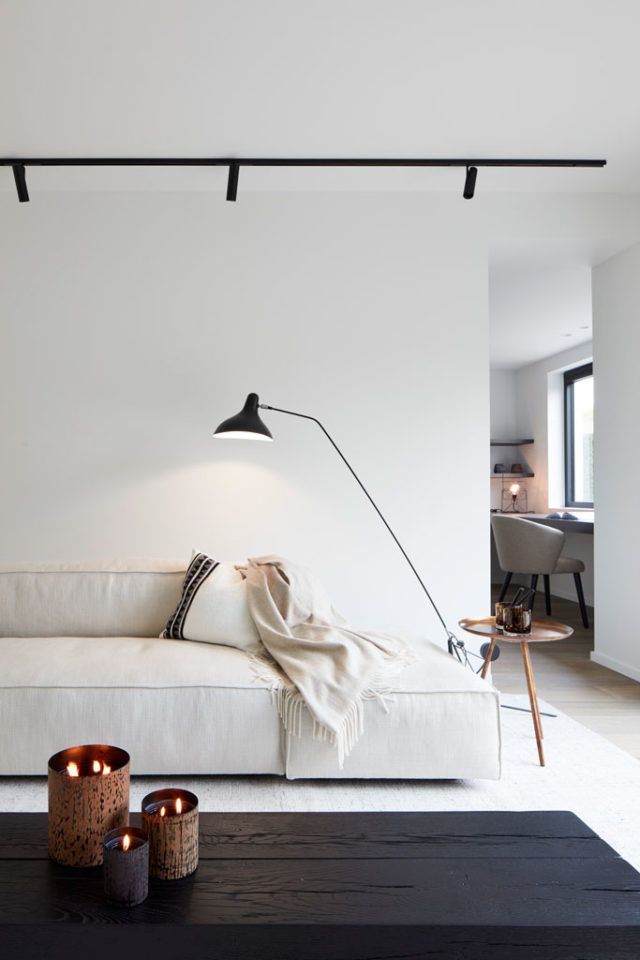
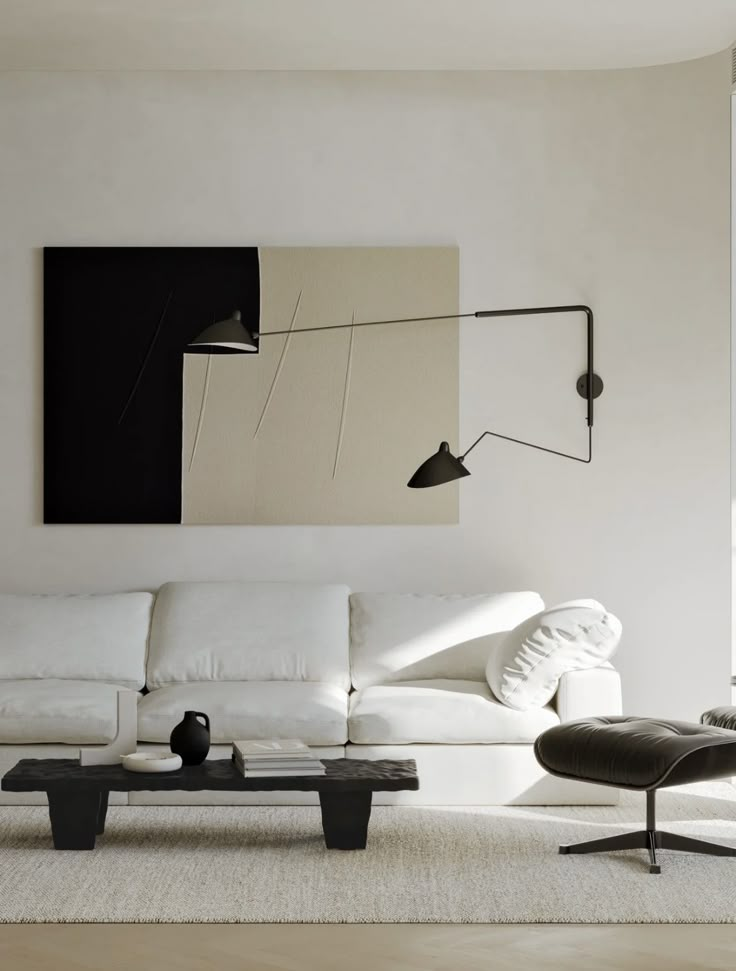
Common Pitfalls and How to Avoid Them
Minimalist design sounds simple, but it’s surprisingly complex to execute effectively. ijcrt critically examines the challenges designers face when implementing minimalist principles, revealing that true minimalism goes far beyond merely removing elements.
Common minimalist design mistakes include:
- Over-Simplification: Removing critical functional elements
- Monotony: Creating spaces or interfaces that feel sterile and uninspiring
- Lack of Personality: Stripping away unique character and emotional connection
- Rigidity: Forcing minimalism where it doesn’t naturally fit
- Expensive Minimalism: Believing high-end, sparse design is the only approach
eejournals highlights the cultural nuances of minimalist design, suggesting that true minimalism requires deep understanding rather than superficial reduction. Casual Color Theory for UI/UX Design Explained offers insights into maintaining personality while embracing minimalist principles. The key is balance: remove the unnecessary without losing the essence, create space without creating emptiness, and simplify without sacrificing soul.
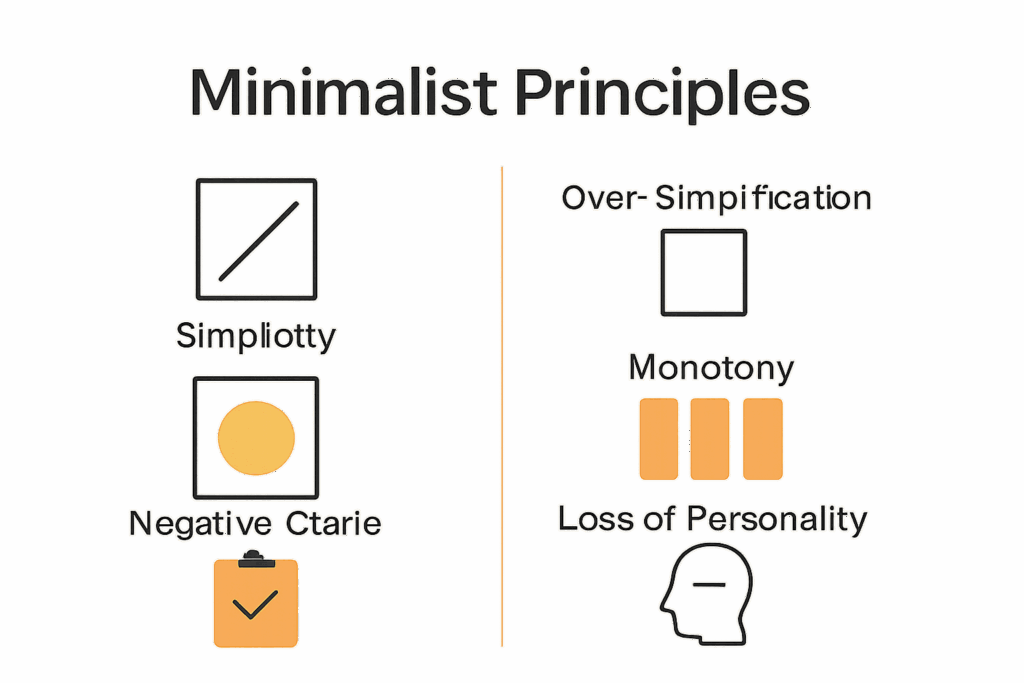
Embrace Minimalism to Transform Your Space and Experience
Are you ready to overcome the common challenges of minimalism like over-simplification and loss of personality? Achieving the perfect balance between simplicity and function can be difficult but incredibly rewarding. By focusing on intentional design and functional clarity, you can create spaces and interfaces that feel purposeful and calm. Explore how minimalist principles come alive in interiors and digital design by diving into expert insights on our Interior | Sky Rye Design and UX / UI | Sky Rye Design categories.

Take your minimalist journey further and find inspiration that resonates with your style and needs. Visit Skyrye Design now to discover creative ideas and practical tips that can help you simplify without sacrifice. Start designing with intention today and unlock the power of minimalist beauty in your environment and digital life.
Frequently Asked Questions

What are the core principles of minimalist design?
The core principles of minimalist design include simplicity of form, color restraint, a function-first approach, and the effective use of negative space. These principles help in creating visually appealing and purposeful designs.
How does minimalism differ across various design fields?
Minimalism manifests uniquely in different design disciplines such as product design, graphic design, architecture, digital design, and fashion design. Each field adapts minimalist principles to suit its specific context while focusing on essential functionality and aesthetics.
What are some practical applications of minimalism in interior design?
In interior design, minimalist principles can be applied through spatial clarity, functional furniture, neutral color palettes, strategic storage solutions, and optimizing natural light to create open and uncluttered environments that promote mental well-being.
What common pitfalls should be avoided in minimalist design?
Common pitfalls in minimalist design include over-simplification by removing critical elements, creating monotone and uninspiring spaces, stripping away unique personality, forcing minimalism inappropriately, and equating minimalism with high-cost design. It’s essential to find balance and maintain the essence of the design.
Recommended
- Minimalist Architecture: Timeless Simplicity’s Power
- 8 Ways to Pair Geometric Wallpaper with Minimalist Decor |
- Get Organized! 10 Casual Home Organization Tips You’ll Love
- Japandi Style: Combine of Japanese and Scandinavian Design
- 0shares
- Facebook0
- Pinterest0
- Twitter0



